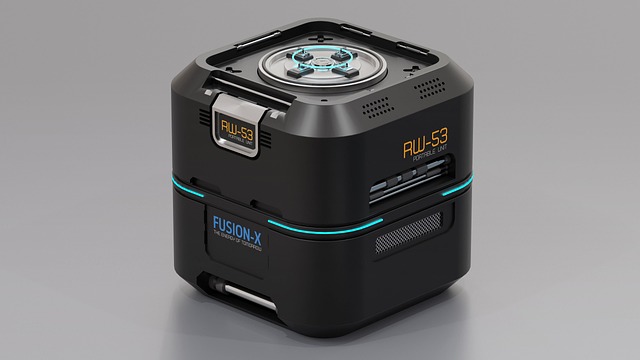Introduction: CMT and the Mitochondrial Connection
Charcot-Marie-Tooth disease (CMT) encompasses a diverse group of inherited neuropathies targeting the peripheral nervous system. These disorders progressively cause muscle weakness, sensory loss, and foot deformities. Mounting evidence highlights mitochondrial dysfunction as a key player in many CMT subtypes. Specifically, disruptions in mitochondrial dynamics – the processes of fusion (merging) and fission (dividing) – are increasingly implicated in how the disease develops and progresses.
Mitochondrial Fusion and Fission: A Dynamic Balancing Act

Mitochondria aren't static; they constantly merge (fusion) and divide (fission). This dynamic dance is vital for maintaining mitochondrial health, sharing resources like mitochondrial DNA (mtDNA), removing damaged sections, and adapting to the cell's energy needs. Fusion, orchestrated by proteins like Mitofusins (MFN1/MFN2) and OPA1, merges mitochondria, allowing them to pool resources and dilute damage. Fission, primarily driven by DRP1, separates mitochondria, often isolating damaged parts for removal via mitophagy (a cellular recycling process). A precise balance between fusion and fission is critical, especially for the high energy demands and survival of neurons.
# Simplified representation of mitochondrial fusion/fission balance
# Note: This is a highly simplified model. Biological regulation is far more complex.
fusion_rate = 0.6 # Example rate of fusion
fission_rate = 0.4 # Example rate of fission
if fusion_rate > fission_rate:
print("Cellular state favors mitochondrial fusion.")
elif fission_rate > fusion_rate:
print("Cellular state favors mitochondrial fission.")
else:
print("Fusion and fission rates are balanced.")MFN2 Mutations: A Direct Link to CMT2A
Mutations in the MFN2 gene are the primary cause of CMT type 2A (CMT2A), a common axonal form of the disease. The MFN2 protein is crucial not only for mitochondrial outer membrane fusion but also for tethering mitochondria to the endoplasmic reticulum (ER), facilitating vital communication and calcium exchange. Most CMT2A-linked MFN2 mutations disrupt its fusion capabilities. This leads to smaller, fragmented mitochondria that struggle with transport along lengthy axons and have reduced energy output (ATP production). These defects starve neurons of energy and disrupt signaling, contributing directly to the axonal degeneration seen in CMT2A.
Beyond MFN2: Other CMT Genes Impacting Mitochondria
While MFN2 mutations are prominent, defects in other CMT-associated genes can also disrupt mitochondrial health and dynamics. For example, mutations in genes essential for axonal transport (like KIF5A) indirectly impair mitochondrial distribution and function within the neuron. Similarly, mutations affecting mitochondrial quality control pathways (involving proteins like HSPB1/HSP27) can lead to an accumulation of damaged mitochondria, further stressing the system. Some CMT genes might also impact mitochondria through less direct routes, affecting overall cellular metabolism or stress responses.
Therapeutic Strategies: Targeting Mitochondrial Health in CMT
Recognizing the central role of mitochondrial dysfunction in CMT opens new therapeutic avenues. Researchers are actively exploring strategies to restore mitochondrial health, including:
- **Pharmacological interventions:** Developing drugs that boost mitochondrial numbers (biogenesis), enhance fusion, or fine-tune fission rates.
- **Gene therapy:** Correcting the underlying genetic defects, like MFN2 mutations, offering a potentially curative approach.
- **Nutritional support:** Using antioxidants or mitochondrial cofactors (like CoQ10) to combat oxidative stress and support energy production.
- **Exercise:** Leveraging physical activity programs designed to stimulate mitochondrial biogenesis and improve muscle function in CMT patients.
Future Research Directions

Future research must pinpoint the exact molecular consequences of altered mitochondrial dynamics in different CMT subtypes. Key goals include identifying new drug targets and developing more effective treatments to halt or reverse disease progression. Understanding the complex interplay between mitochondrial dynamics, ER stress, autophagy, and axonal transport is critical. Furthermore, developing more sophisticated *in vitro* (cell-based) and *in vivo* (animal) models that accurately mimic CMT pathology is essential for testing new therapies and deepening our understanding of the disease.
- Analyzing how specific MFN2 and other CMT gene mutations uniquely affect mitochondrial shape, movement, and function.
- Screening and developing novel compounds that specifically modulate mitochondrial fusion/fission pathways.
- Employing advanced live-cell imaging to visualize mitochondrial behavior in real-time within CMT models.
- Designing and conducting rigorous clinical trials for promising mitochondrial-targeted therapies.
